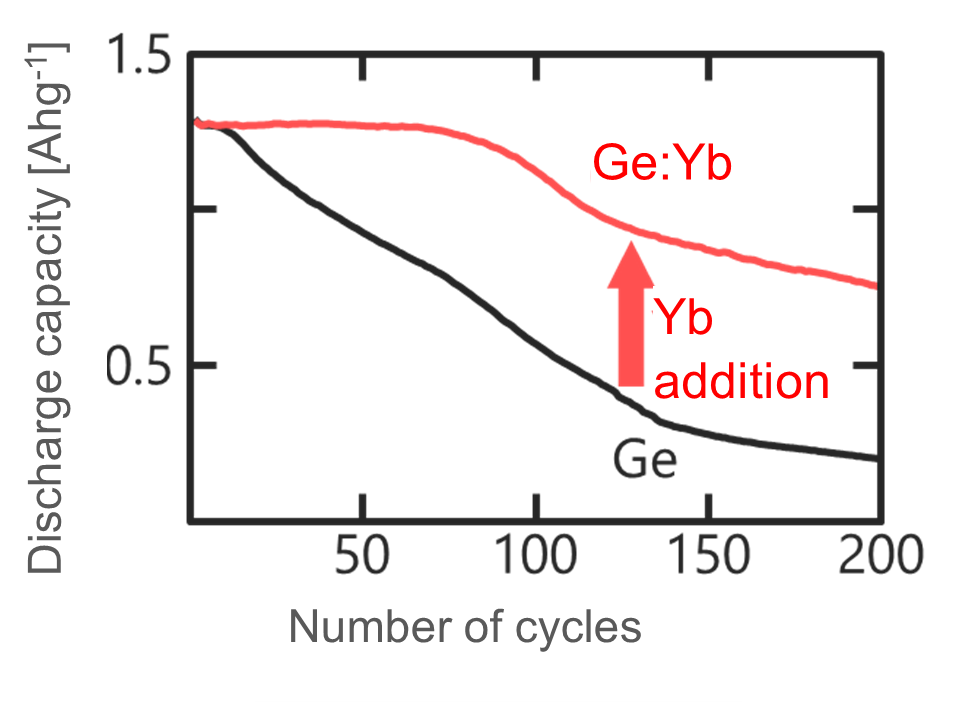Summary
- A lithium-ion battery featuring a germanium (Ge) anode with suppressed degradation even after repeated charging and discharging, achieved by adding heterometallic elements.
- This is a novel technology enabling the long-anticipated improvement of cycle life for Ge-based electrodes in lithium-ion batteries.
- Among the additives evaluated, ytterbium (Yb) showed the highest degradation suppression effect. Similar benefits are expected from other metals with atomic sizes larger than Ge.
- We are seeking companies interested in the commercialization and practical application of this lithium-ion battery technology or its materials.
Technology Overview & Background
As the information society continues to evolve, the demand for higher-capacity lithium-ion battery anodes is increasing. Germanium (Ge) has attracted attention as a next-generation anode material due to its approximately five times higher capacity compared to conventional carbon electrodes and its ability to support high-speed charge/discharge. However, Ge electrodes have a significant drawback: they expand and contract during charge/discharge cycles, leading to cracks and rapid degradation over repeated cycling, which shortens the battery’s lifetime.
To address this issue, the researchers developed a new type of electrode by incorporating a small amount of heterometallic elements into the Ge matrix to suppress volume changes and enhance durability. Among the several metals tested, ytterbium (Yb) was found to be the most effective in reducing degradation and extending the anode’s lifetime. Additionally, other metal elements with atomic sizes larger than Ge—such as copper, nickel, silver, tungsten, and tantalum—are also expected to provide similar effects.
This technology solves the long-standing challenge of poor durability in Ge-based anodes, paving the way for the advancement of next-generation lithium-ion rechargeable batteries
Data
- The cycle performance of a battery using a Ge anode containing 3% Yb was evaluated by charging and discharging at a current of 1 A/g relative to the weight of the anode. As shown in the figure below, the battery with the Yb-added Ge anode exhibited a smaller decrease in discharge capacity compared to the one without Yb addition.
 |
Patent
Patent pending (unpublished)
Researchers & Academic Institution
Kaoru Togo, PhD (Professor, University of Tsukuba, Japan), et al.
Expectations
The University of Tsukuba is looking for companies that are interested in this technology and are considering its commercialization and practical implementation through a licensing agreement. This includes manufacturers developing lithium-ion batteries and suppliers of battery materials. Direct meetings with the researchers can be arranged for discussions regarding technology or projects. Additionally, subject to a non-disclosure agreement (NDA) with the University of Tsukuba, access to unpublished data and further information can also be provided.
Project ID: DA-05091


